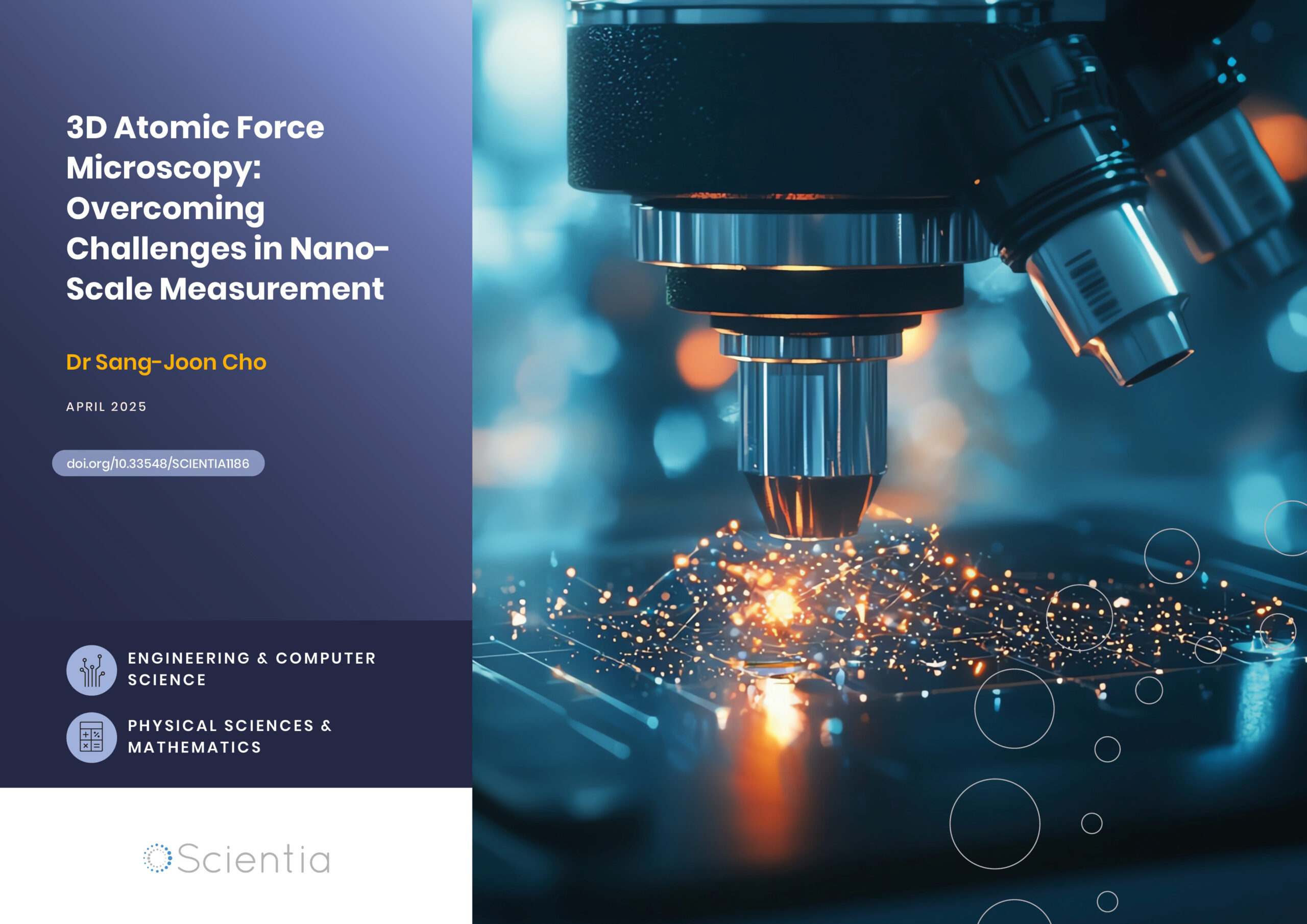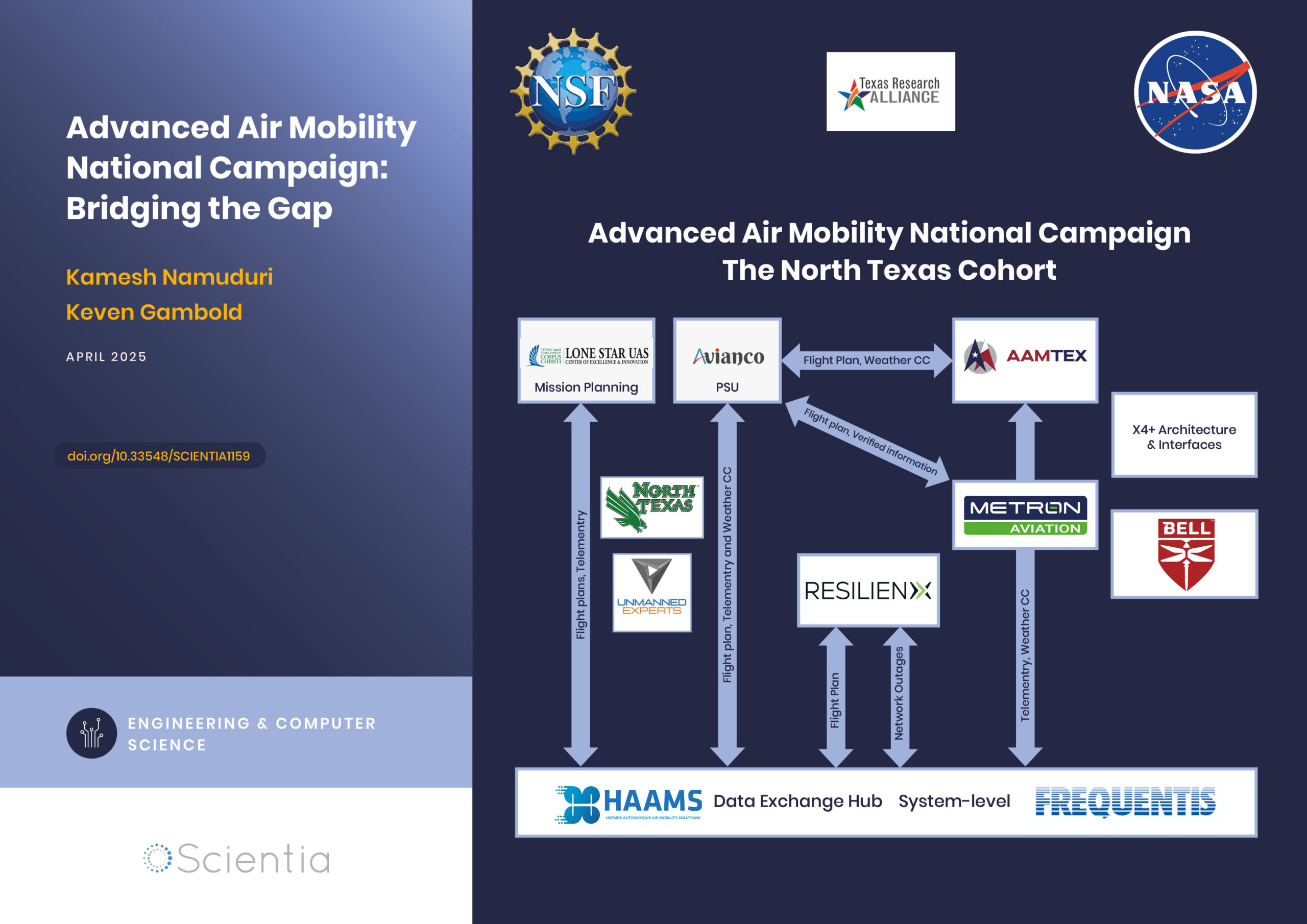Dr Guo-Xing Miao | Lithium-Imbued Memristors: A Versatile Platform for Brain-Inspired Computing
Researchers are increasingly looking to the human brain for inspiration in the quest to develop more energy-efficient and powerful computing systems. The brain’s ability to process complex information with remarkable energy efficiency has led scientists to explore new materials and architectures that can mimic its functions. Dr Guo-Xing Miao and his colleagues at the University of Waterloo have made significant strides in this direction with their innovative work on lithium-imbued memristors – iontronic devices that can switch between volatile and non-volatile memory states resembling our short-term and long-term memories, offering a versatile platform for brain-inspired computing.
The Challenge of Neuromorphic Computing
Traditional computing systems based on the von Neumann architecture, with separate processing and memory units, are reaching their limits in terms of energy efficiency and speed. This is particularly evident when dealing with complex tasks such as image and voice recognition, weather forecasting, autonomous driving, and natural language processing. To address these limitations, researchers are exploring neuromorphic computing – a non von Neumann approach that aims to mimic the structure and function of biological neural networks and perform tasks largely in parallel.
One of the key challenges in neuromorphic computing is to develop hardware components that can emulate the behaviour of synapses, the connection points between neurons in the brain. Synapses can strengthen or weaken over time, a property known as plasticity, which is crucial for learning and memory formation. Thus, the computation tasks are performed in the memory itself, which grants the system capabilities of comprehending instructions in ‘concepts’ rather than executing word by word. Dr Guo-Xing Miao at the University of Waterloo explains that creating artificial synapses with similar plasticity is a significant hurdle in the field.
The University of Waterloo team emphasises the need for devices that can gradually change their conductance, much like biological synapses change their strength. Moreover, these devices should be able to operate in both short-term and long-term memory modes, mirroring the brain’s ability to process immediate information and store lasting memories.
A Novel Approach Using Lithium-imbued Titanium Oxide
To address these challenges, Dr Miao and his team developed a novel memristor device based on lithium-imbued titanium oxide (TiOx). The device consists of a bilayer structure: a thin film of TiOx and a layer of lithium phosphorus oxynitride (LiPON) sandwiched between two electrodes.
The researchers chose TiOx because of its excellent properties for storing and releasing ions, similar to its use in rechargeable batteries. The LiPON layer serves as a solid-state electrolyte, providing a source of lithium ions that can move in and out of the TiOx layer under electrical stimulation. This unique battery-like construction allows the device to exhibit both volatile and non-volatile memory characteristics, making it highly versatile for neuromorphic computing applications. In its volatile state, the device behaves like a short-term memory, with its conductance changing temporarily in response to electrical stimuli. In its non-volatile state, it can retain information for extended periods, much like long-term memory in the brain.
Mimicking Synaptic Behaviour
One of the most exciting aspects of the team’s work is how closely their devices mimic the behaviour of biological synapses. Dr Miao and his colleagues demonstrated several key synaptic functions. The first was short-term plasticity, in which devices showed the ability to temporarily change their conductance in response to electrical pulses, similar to how synapses in the brain briefly strengthen or weaken their connections. The second function was paired-pulse facilitation. When two electrical pulses were applied in quick succession, the response to the second pulse was stronger than the first, mirroring a phenomenon observed in biological synapses.
The third function was post-tetanic potentiation, in which a train of pulses led to a gradual increase in the device’s conductance, analogous to how repeated stimulation can strengthen synaptic connections in the brain. The final function was spike rate-dependent plasticity. In this instance, the change in conductance depended on the frequency of applied pulses, resembling how the brain’s synapses respond differently to varying rates of neural activity.
The team notes that their lithium-memristor devices exhibit these behaviours without needing any special forming process or current limiting during operation, making them much simpler to use and integrate into larger systems.

Tuneable Memory Characteristics
Another significant feature of the team’s devices is their tuneable memory characteristics. By adjusting the duration and amplitude of the applied voltage pulses, the researchers could control how long the device retain its conductance state. Dr Miao emphasises that this tunability is crucial for creating flexible neuromorphic systems. It enables the design of circuits capable of processing information across various timescales, from milliseconds to seconds or even longer, similar to how different regions of the brain manage information over different time periods.
The team also investigated how temperature affects device behaviour. They found that below -50°C, the lithium ions become ‘frozen’ and unable to move, causing the device to lose its volatile memory characteristics. Reversely, ion activities become higher at higher temperatures, leading to more pronounced volatile responses. This insight provides valuable information about the underlying mechanisms of the device’s operation and could be useful for designing systems with desirable speeds and amplitudes.
Programmability from Volatile to Non-volatile
Perhaps the most intriguing aspect of the team’s work is the ability to transform volatile memory devices into non-volatile ones on demand. By applying a higher voltage, it was possible to create conductive filaments within the device, allowing it to retain its conductance state for extended periods. This dual-mode capability means the same basic device structure can be used to create both the dynamic, short-term memory elements and the stable, long-term memory elements needed for complex neuromorphic systems. The non-volatile version of the device showed excellent performance, with the ability to store multiple conductance states (e.g., a minimum of 16 distinct levels) and retain this information for extended periods without significant degradation. Such flexibility makes the platform an inherent field programmable neural array (FPNA) for target applications.
Putting Theory into Practice with a Voice Recognition Demo
To demonstrate the practical potential of their devices, Dr Miao and his team designed a reservoir computing system for voice recognition tasks. Reservoir computing is a type of recurrent neural network that is particularly well-suited for processing time-dependent data, such as speech.
The researchers used their volatile memristor devices as the reservoir layer, taking advantage of their dynamic, history-dependent conductance changes to process input signals. The output layer, responsible for classification, was simulated using the non-volatile characteristics of these devices.
Dr Miao reports that the system achieved an impressive 94.4% accuracy in voice recognition tasks, outperforming traditional methods by 4%. Even more impressively, they achieved this with a minimal amount of training data, showcasing the efficiency of their approach. The team’s reservoir computing system also demonstrated excellent energy efficiency. By quantising the weights in the output layer to 8-bit precision and proposing a novel compute-in-memory array design, the team showed how devices could be used to create highly efficient hardware for neuromorphic computing.
A Promising Future for Brain-Inspired Computing
The work of Dr Miao and his team represents a significant step forward in the field of neuromorphic computing. Their lithium-imbued memristors offer a versatile platform that combines volatile and non-volatile memory characteristics, closely mimicking the behaviour of biological synapses. The back end of line integration of these devices with CMOS circuits has been demonstrated and will now be presented at upcoming IEEE conferences. The team is not just creating devices that perform calculations; the members are developing systems that process information in a fundamentally brain-like way. Their work brings us one step closer to creating truly brain-inspired computing systems that can match – and perhaps one day surpass – the remarkable capabilities of the human mind.
SHARE
DOWNLOAD E-BOOK
REFERENCE
https://doi.org/10.33548/SCIENTIA1099
MEET THE RESEARCHER

Dr Guo-Xing Miao
Department of Electrical and Computer Engineering and Institute for Quantum Computing,
University of Waterloo,
Ontario,
Canada
Dr Guo-Xing Miao is an Associate Professor in the Department of Electrical and Computer Engineering and the Institute for Quantum Computing at the University of Waterloo. He obtained his PhD from Brown University and completed postdoctoral research at the Massachusetts Institute of Technology. Dr Miao’s research spans diverse areas, including ‘spin·iontronics’ (spintronics meeting iontronics), superconductivity, and quantum computing. He has published extensively in high-impact journals such as Nature, Physical Review Letters, and Advanced Materials. Dr Miao has received several awards for his research and is a Senior Member of the Institute of Electrical and Electronics Engineers. He also serves on the editorial boards of multiple journals in his field. Dr Miao’s work advances our understanding and application of quantum materials and devices, impacting the development of future computing and information technologies.
CONTACT
E: guo-xing.miao@uwaterloo.ca
W: https://uwaterloo.ca/electrical-computer-engineering/profile/g2miao
KEY COLLABORATORS
Professor Manoj Sachdev, University of Waterloo, Fellow of the Institute of Electrical and Electronics Engineers and Fellow of the Engineering Institute of Canada
FUNDING
Transformative Quantum Technologies (a collaborative research initiative led by the University of Waterloo and the technology development vector of the Institute for Quantum Computing).
FURTHER READING
G Long, et al, Interfacial Control via Reversible Ionic Motion in Battery‐Like Magnetic Tunnel Junctions, Advanced Electronic Materials, 2021, 7(9), 2100512. DOI: https://doi.org/10.1002/aelm.202100512
F Zhang et al, Li-ionic control of magnetism through spin capacitance and conversion, Matter, 2021, 4(11), 3605. DOI: https://doi.org/10.1016/j.matt.2021.09.006
GX Miao, et al., Tunneling path toward spintronics, Reports on Progress in Physics, 2011, 74(3), 036501. DOI: https://doi.org/10.1088/0034-4885/74/3/036501

REPUBLISH OUR ARTICLES
We encourage all formats of sharing and republishing of our articles. Whether you want to host on your website, publication or blog, we welcome this. Find out more
Creative Commons Licence (CC BY 4.0)
This work is licensed under a Creative Commons Attribution 4.0 International License. 
What does this mean?
Share: You can copy and redistribute the material in any medium or format
Adapt: You can change, and build upon the material for any purpose, even commercially.
Credit: You must give appropriate credit, provide a link to the license, and indicate if changes were made.
SUBSCRIBE NOW
Follow Us
MORE ARTICLES YOU MAY LIKE
Calculating Steering Friction: Essential Engineering for Military Aircraft Safety
The safe operation of military training aircraft depends on precise engineering calculations that most of us never consider. Dr Bogdan Adrian Nicolin and Dr Ilie Nicolin from the National Institute for Aerospace Research in Romania have developed sophisticated methods to calculate the steering friction moment in military aircraft. This critical engineering parameter ensures that pilots can safely control aircraft during taxiing, take-off, and landing – making their work essential for both pilot training and flight safety.
Dr Sang-Joon Cho | 3D Atomic Force Microscopy: Overcoming Challenges in Nano-Scale Measurement
Nano-scale imaging and measurement are crucial for the development of new gadgets – from the latest phones to advanced drug discovery technologies. Dr Sang-Joon Cho and his team at Park Systems Corporation have developed a new approach to measuring and characterising microscopic components, offering exciting potential to accelerate advancements in the technologies essential to the modern world.
Advanced Air Mobility National Campaign: Bridging the Gap
The rapid advancements in technology have paved the way for revolutionary changes in transportation, particularly air mobility. One such groundbreaking initiative is the Advanced Air Mobility (AAM) National Campaign led by NASA. This campaign aims to integrate advanced air mobility solutions into the existing transportation infrastructure, creating a seamless, efficient, and safe urban air transportation system. By addressing the various challenges associated with urban air mobility, the AAM National Campaign is poised to redefine how we navigate our cities, ultimately leading to reduced congestion, improved accessibility, and enhanced environmental sustainability.
Professor Edward Smith | Soaring to New Heights: Investigating the Aeroelastic Stability of Composite Aircraft Wings
Combining the best aspects of helicopters and fixed-wing aircraft into a single vehicle has been a long-held ambition in the aerospace industry. From Leonardo da Vinci’s early drawings of an ‘aerial screw’ to the V-22 Osprey tiltrotor aircraft used by the U.S. military today, engineers have grappled with the challenge of creating aircraft capable of both vertical take-off and landing (VTOL) and high-speed forward flight. While helicopters offer unparalleled VTOL performance, their top speeds are limited to around 300 km/h. Fixed-wing aircraft offer greater speed but require long runways for take-off and landing. Reconciling these conflicting design requirements is a major challenge.





